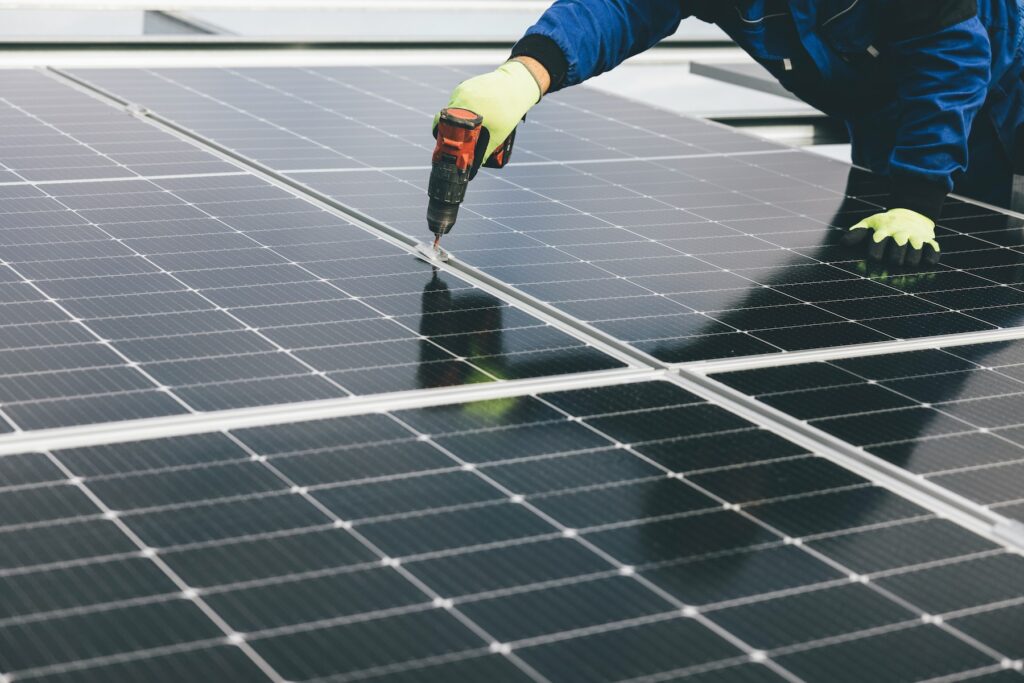BillionBricks’ net-zero homes in the Philippines empower vulnerable communities by providing resilient and sustainable shelter solutions that withstand climate-related disasters, enhance livelihoods, and foster community resilience.
A BillionBricks Prototype in Tacloban city, Philippines
Net-zero homes are designed and constructed to produce as much energy as they consume, resulting in a neutral or zero carbon footprint. These homes incorporate renewable energy systems, energy-efficient technologies, and sustainable design principles to minimize energy consumption and greenhouse gas emissions.
BillionBricks, a climate-tech venture based in Singapore, has introduced net-zero homes in the Philippines. These net-zero homes are designed to be self-sufficient, generating their own energy and minimizing their carbon footprint. Net-zero homes have the potential to be a transformative solution for the environmental problems in the country.
Climate Vulnerability in the Philippine Context
The Philippines, an archipelago of over 7,000 islands in Southeast Asia, is renowned for its natural beauty and rich biodiversity. However, this nation faces the stark reality of being one of the most vulnerable countries to climate change.
Situated along the typhoon belt and the Pacific Ring of Fire, the Philippines is prone to a multitude of climate-related hazards, including typhoons, floods, landslides, storm surges, and volcanic eruptions. The country experiences an average of 20 tropical cyclones each year. The vulnerability is further amplified by the nation’s coastal areas, which are highly susceptible to rising sea levels.
Climate change also poses a severe threat to the agricultural productivity of the country According to World Bank, changing rainfall patterns, prolonged droughts, and increased temperature impact crop yields, livestock health, and fishing industries. Small-scale farmers, who constitute a significant portion of the agricultural workforce, are particularly vulnerable to these changes.
Climate vulnerability in the Philippines has social and economic consequences. The impacts affect marginalized communities, including indigenous peoples, coastal dwellers, and informal settlers in the country.
The BillionBricks Approach to Net Zero Homes
BillionBricks is building net-zero homes in the Philippines. Our approach to net-zero homes is based on sustainable design, on-site renewable energy, and community engagement,
Our net-zero homes are designed to be energy efficient and to use sustainable materials. The homes are built to incorporate passive house standards, which means that they require very little energy to heat or cool. The homes are also made from sustainable construction materials.
BillionBricks‘ homes are equipped with solar panels, which generate electricity on-site. This means that the homes are not reliant on the grid, and they can produce their own energy.
In addition, BillionBricks works with local communities to build their homes. This helps to create jobs and to build a sense of ownership and pride in the community.
Our approach to net-zero homes is a sustainable and affordable way to provide housing for people in the Philippines. Our homes are energy efficient, they use sustainable materials, and they are built with the help of local communities.
Net Zero Homes for Climate Resilience and Disaster Preparedness
A BillionBricks Prototype in Tacloban city, Philippines
In 2013, Tacloban, a city in the Eastern Visayas of the Philippines, experienced severe devastation when Typhoon Haiyan struck. The extent of destruction was overwhelming, with Tacloban suffering a staggering 90% destruction. The impact was widespread, affecting 600,000 hectares of farmland and resulting in the destruction of 1.1 million tonnes of crops, amounting to a devastating loss of $724 million.
To address the urgent need for resilient and safe shelters that could withstand future typhoons and provide a refuge for the affected locals, partnered with Mercy Relief and the local government unit to construct one of its initial net-zero homes in Tacloban. This initiative aimed to provide a sustainable solution by creating a prototype that not only offers a secure space but also has the ability to generate electricity, even in the event of post-typhoon blackouts.
Aside from the Tacloban project, BillionBricks also partnered with Shell Singapore in 2021 through their Shell Idea Refinery Program to launch a pilot project of our model unit in Barangay Macabalan, Cagayan De Oro, Philippines. This collaboration involved Green Antz Builders, Inc., who worked alongside us to construct the model unit using eco-bricks.
The success of the project is evident as the local government officials have repurposed our model unit to serve as a session hall and screening area for the Barangay health center. In this capacity, the unit facilitates health workshops for community residents, showcasing how our scalable and replicable unit designs can bring benefits to communities.
The Success of BillionBricks Projects in the Philippines
The demand for net-zero homes is growing. More and more people are looking for homes that are energy efficient, sustainable, and comfortable. BillionBricks is at the forefront of the net zero home movement. We are committed to building affordable, sustainable homes for people in the Philippines. In fact, we will be starting the construction of the first net zero community in the country in 2023.
BillionBricks’ approach to net-zero homes is commendable. Our success in the Philippines shows that it is possible to build affordable, sustainable homes that are energy efficient. For further information on how BillionBricks can benefit your community, get in touch with us at https://calendly.com/d/y5t-wh7-hdd/call-with-billionbricks
Sources:
-
BillionBricks. (2023). BillionBricks Tacloban LinkedIn Post. Retrieved from https://www.linkedin.com/feed/update/urn:li:activity:7062712750648508416
-
BillionBricks. (2023). BillionBricks Cagayan de Oro LinkedIn Post. Retrieved from https://www.linkedin.com/feed/update/urn:li:activity:7039902823349706752
-
Prasoon Kumar. (2023). What is a net-zero home? Retrieved from https://billionbricks.org/updates/what-is-a-net-zero-home
-
World Bank. (2021). Climate Risk Country Profile. Retrieved from https://www.adb.org/sites/default/files/publication/722241/climate-risk-country-profile-philippines.pdf






